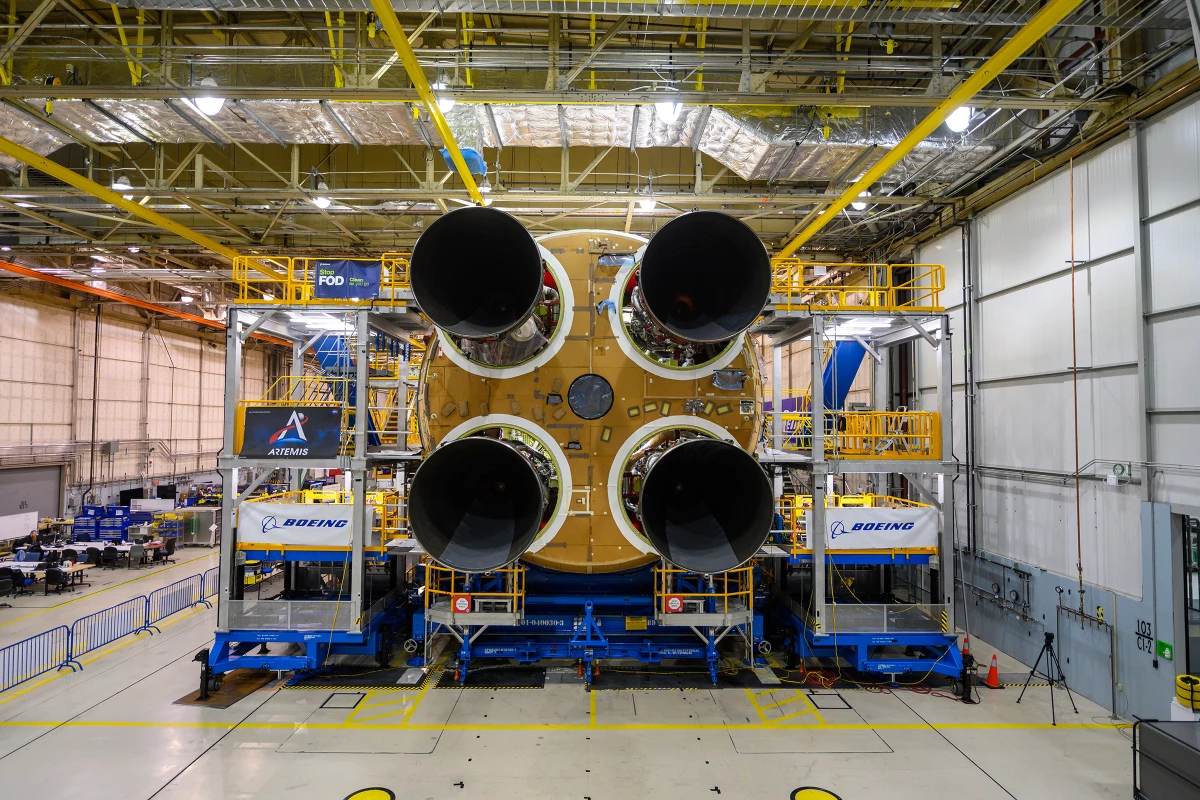Engineers have mated the fourth and final Space Shuttle-era engine to the core stage of the first Space Launch System (SLS) Moon rocket. NASA hopes to use the super heavy launch vehicle, along with the Orion spacecraft and other hardware, to forge a path back to the Moon, before attempting a crewed missions to Mars.
Upon completion, the SLS core will be the largest stage created by NASA since the development of the Saturn V. The SLS first stage boasts two massive tanks – one for housing liquid oxygen and another for liquid hydrogen – which together are capable of storing a staggering 730,000 gallons of fuel.
The contents of the tanks are fed to four RS-25 engines located at the base of the stage, which during flight are controlled by avionics systems and flight control computers located in the intertank and forward skirt of the rocket.
The final RS-25 was mounted on November 6, and Engineers at NASA’s Michoud Assembly Facility in New Orleans are now working to connect the electronics and avionics of the core to the newly-attached engine.
The four heritage RS-25s that will power the first SLS are already steeped in aeronautic history, having carried out multiple successful shuttle launches. Working in concert, the engines will provide over 2 million pounds of thrust.
NASA hopes that the engines, aided by two massive side-strap boosters and upper stage propulsion will be instrumental in returning astronauts to the lunar surface by the year 2024.
Of course, its worth remembering that rocket science is a famously tricky business, and that any number of things could go wrong before the mammoth rocket even reaches the launch pad for its maiden flight, which has been dubbed Artemis 1. As always, expect delays.
Once engine integration is complete, the 212-ft (65-m) core stage will undergo rigorous testing to make sure that the avionics systems are able to successfully communicate with one other, and in so doing control the rocket’s trajectory.
Source: NASA




